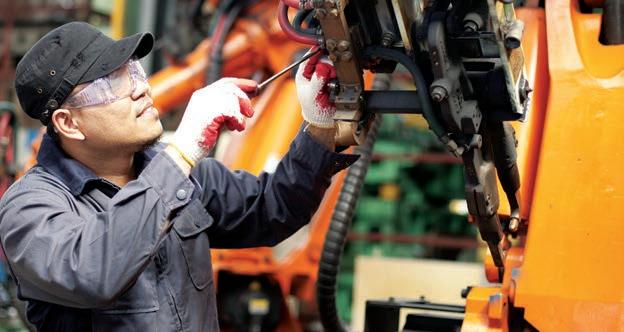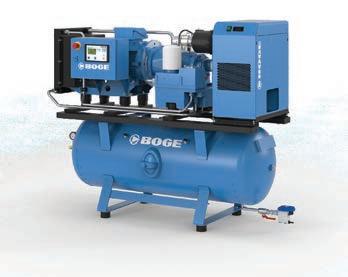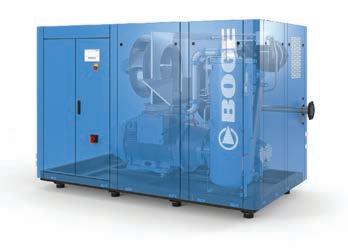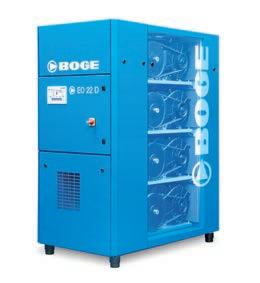
15 minute read
Comment
from MM May 2020
by Prime Group
GEOFF CRITTENDEN – CEO, Weld Australia
Comment
There is a commitment needed from state and federal governments to increase levels of local content for all procurement decisions in the country.
AUSTRALIA has a long, proud history of manufacturing throughout the 20th century.
With the federation of Australia in 1901, customs barriers were eliminated between the states, so they could more easily trade with another. This saw the first wave of manufacturing expansion, particularly in Victoria and New South Wales. By 1913, manufacturing employment totalled at 328,000 and accounted for 13 per cent of GDP.
During World War I, the Australian Government quickly realised that our economy was too reliant on imports; it was near impossible to source many products in wartime. As a result, Australia started to manufacture a range of products onshore during the war, from aspirin right through to chlorine.
Our steel industry also experienced enormous growth. BHP opened a new steelwork in Newcastle in 1915, which generated huge profits due to the unprecedented demand for steel to build ships, ammunition and artillery.
Australia quickly matured from a rural economy into a substantial manufacturing power.
The 1920s marked the beginning of the car manufacturing boom in Australia. Both General Motors and Ford established factories across the nation, in Adelaide, Brisbane, Fremantle and Sydney. At the time, it was more cost effective for these American manufacturing giants to assemble their cars using imported components, rather than import complete vehicles. By 1929, 440,000 people were employed in manufacturing, approximately 18 per cent of the total population.
While car manufacturing took off, Australia also faced challenges in 1920s; the Great Depression impacted several of our industries, particularly heavy industrial manufacturing (such as tools and metal parts). To help industry stave off these challenges, the Australian Government applied tariffs to some imported goods, encouraging Australians to buy local.
As a result, the Australian metalworks and heavy industrial manufacturing sectors expanded in the 1930s. BHP took over the Port Kembla steelworks. General Motors started building all-steel welded car bodies at its new plant in Melbourne. Rheem started manufacturing water heaters. The Commonwealth Aircraft Corporation opened their plant in Melbourne.
When World War II hit in 1939, Australian manufacturing was poised to play an even greater role than it had during World War I. With imports scarce, local demand was high. And, Australian also became an important supplier of manufactured goods to the UK and the US.
Australian manufacturing remained strong in the years immediately after World War II. For instance, Toyota opened up shop in the late 1950s. And, in the 1960s, Alcoa opened its first alumina refineries in Kwinana, Pinjarra and Wagerup. Throughout the 1950s and 1960s, Australian manufacturing was responsible for approximately 28 per cent of the GDP, and 28 per cent of all employment.
A decline in Australian manufacturing
By the 1970s, Australian manufacturing was in decline. Local manufacturers were unable to compete with imported goods. Imports were much cheaper than goods produced in Australia, which meant businesses and governments alike began to consistently off-shore their contracts for products and projects. Manufacturing saw its share of total employment fall from 25 per cent in 1970 to 19 per cent by 1980.
Fast forward to today and, while manufacturing remains a vital part of the Australian economy, it is responsible for just five per cent of the GDP, and only 5.4 per cent of total employment. Arrium collapsed in 2016. Holden and Ford have closed their facilities.
Australian manufacturing is dying.
This slow and painful death is due, in part, to market forces: an extended period of unfavourably high exchange rates; the rapid rise of China as “the world’s factory”; increasing wage costs; a lack of skilled workers; and increases in local energy and other input costs.
But it cannot all be blamed on market forces.
Successive state and federal governments continue to off-shore manufacturing work that the local industry is more than equipped to handle. Take, for example, rail industry projects. As recently as 10 years ago, most rail vehicles were designed and manufactured here in Australia. Not anymore.
The $2.43 billion contract for the new Intercity train fleet was sent off-shore by the New South Wales Government. Sydney’s Waratah trains have only 20 per cent local content. Queensland’s new trains were fabricated in India, failed to meet Australian Standards for accessibility, and are now undergoing significant rework. And, while Victoria’s Metro Trains are manufactured locally, all the fabrication work is completed in China.
And let’s not forget about the big corporates. Many, if not all, of the major mining companies off-shore their fabrication work. It was not so long ago that BHP awarded more than 20,000 tonnes of structural steel work for its $4.7bn South Flank project to an off-shore manufacturer.
The $150bn investment by the federal government in the defence industry has revitalised many small-tomedium enterprises (SMEs) within the Australian manufacturing supply chain and brought in new investment from overseas. However, this is just a drop in the bucket; we need a much larger proportion of government spending to remain in Australia.
A global comparison
Let’s compare Australia to the rest of the world. Manufacturing makes up about one per cent of the workforce in Germany, Japan, and Switzerland. Canada, whose economy otherwise is similar to ours, has 1.7 million manufacturing workers, compared to our 47,500. In Israel and Sweden, with far smaller populations, advanced manufacturing is thriving.
South Korea – the 5th largest export economy in the world and the 6th most complex economy according to the Economic Complexity Index (ECI) – had a positive trade balance of $124bn in 2017.
In comparison, Australia lags behind as the 20th largest export economy in the world and the 59th most complex economy. In 2017, Australia had a positive trade balance of just $44bn – just a third of that of South Korea’s.
It is a matter of national pride to buy South Korean-made goods, from trains to cars to telephones. Imports
and sales of products such as Germanmade cars and iPhones are some of the lowest in the world in South Korea.
Why? Because every element of government and the South Korean people work together to support their local manufacturing industry. There is a real cultural and governmental focus on growing and protecting their local economy and developing their own strengths.
The impact of COVID-19
In the wake of the COVID-19 pandemic, it is becoming ever more obvious that the complete lack of support from state and federal governments and industry at all levels has had a possibly terminal impact on Australian manufacturing.
This lack of support has weakened our ability to compete internationally and reduced our industry to the lowest common denominator: cost. This economic rationalist way of living, which delivers short-term savings, will not secure the future of our economy or manufacturing industry long-term.
While hundreds of thousands of people are expected to lose their jobs as a result of the economic flow-on effect of COVID-19, the manufacturing industry continues to operate – quietly, under the radar – and to employ approximately 10 per cent of the population.
The federal government has pledged $320bn, representing 16.4 per cent of annual GDP, to economic stimulus packages designed to bolster the economy in the wake of the COVID-19 pandemic.
What if just a fraction of this $320 billion had been invested into the manufacturing industry over the last ten or 20 years? What if the federal government had invested in local manufacturing industries, instead of offshoring work – effectively investing in international economies?
Before it collapsed, the car industry wanted just $300 million a year in government assistance – just 0.09 per cent of the COVID-19 stimulus package. This funding would have been shared across 120 tier one manufacturers and suppliers to keep their factories running and to keep thousands of Australians in jobs. In return, each manufacturer would have invested three dollars for every one taxpayer dollar.
If federal government had invested in Australian jobs, companies, and the manufacturing industry as a whole, our economy would be much better positioned to weather the impacts of COVID-19.

So then, what is the solution?
Clearly, the COVID-19 pandemic is a disaster. But, let’s hope it offers a silver lining for manufacturing. Let’s hope it opens the politicians’ eyes to investing in the local Australian economy.
We need a commitment from state and federal governments to increased levels of local content for all procurement decisions. We need the big corporates, like BHP, to award local contracts to local companies.
The strength of the sovereign capability of Australia depends on Australians investing in Australia. It might be cheaper in the short-term to buy from Thailand, China, or South Korea, but all this does is weaken our economy.
If Australia is ever going to re-pay the $320bn stimulus package, we need to invest in our economy. We need to bring home the manufacture of goods such as cars, rail infrastructure, and solar power equipment.
If we do this, local companies will then be in a position to invest in their own businesses, and to strengthen our manufacturing industry from within. Business innovation encourages the creation of strong and lasting new businesses and the creation of new and better jobs, which together support a move to higher living standards. Innovation investment by business is crucial to our ongoing prosperity.
To secure the future of Australian manufacturing and re-pay the debt that COVID-19 will leave in its wake, we need determined action from our governments, industry leaders, and the general public to put Australia first. We need to foster a sense of social responsibility.
We need Australians to support Australia.
DAVID CHUTER – CEO and managing director, IMCRC
Comment

WHEN it comes to manufacturing leadership, resilience is a key theme we have been discussing at the Innovative Manufacturing Cooperative Research Centre (IMCRC) this year.
Manufacturers, like most, now fear the uncertainty of 2020 and beyond.
Just as Australia was recovering from the shock of this summer’s devastating bushfire season, the World Health Organization (WHO) declared COVID-19 a pandemic on 11 March 2020. The pandemic has had a huge impact on people’s lives and every aspect of the Australian economy. Even before then, COVID-19 was destabilising our workforce and supply chains. Due to our over-reliance on China and others for imports, manufacturers have simply not been shielded from significant negative impact and disruption.
I want to be clear that while it might seem counterintuitive, there has never been a more important time for manufacturing in Australia, and it strikes me that there are three areas that stand out.
First, we continue to see an unprecedented interest from manufacturing businesses putting up their hands to help with design, manufacture and supply of critical healthcare items, which is to be applauded as long as it is well coordinated and able to provide good growth prospects for those businesses. This is the short game.
Second, now is the time (and many for once may be “time rich”) to closely examine and rethink business models and adopt new approaches to manufacturing, technology, collaboration and innovation. Advances in digital technologies and new, collaborative business models enable manufacturers to navigate these challenging times and consider the actions needed to ensure their companies will not only survive but find ways to innovate and become more resilient in the new world of disruption and uncertainty.
And third – the longer game – now is the time to consider what our sector must look like (in the not too distant future) if we are to have the national capability and capacity to withstand disruptive times. We have clearly been found out – perhaps we did not realise what we could no longer manufacture (although I would argue those in the automotive industry knew what we were losing when we stopped making cars, particularly the deep capability within the supply chains) – and we cannot afford to be found out again.
So, how can manufacturing leaders address these three key areas and build resilience and position their companies in this new world? Here are five suggestions to consider, several of which I learned in the automotive industry during the Global Financial Crisis (GFC), and which enabled us to successfully accelerate out of that crisis and take an Australian business to the world.
1. Recognise and protect your value drivers.
In times of economic uncertainty and adversity, your intuition might tell you to downsize your business and reduce your most expensive costs or assets.
The better response, if you can, is to be counterintuitive.
Be clear on how you create value for your customers, and how your assets, products, services and people fit into that. If your people – their ideas, know-how and potential – are your key value drivers, then it’s likely they are likely the ones who will help you come out the other side of adversity. Other than cash to remain solvent, for many businesses the most important assets are people, both within the business and within the broader ecosystem such as suppliers.
If you have no other choice but to let people go, consider first whether supporting mechanisms can help (e.g. the Commonwealth’s JobKeeper program), and also how you could refocus and retarget the efforts of your existing people to chart a new direction for your business. For example, could an engineer lead an

In times of volatility, uncertainty, complexity and ambiguity, true leaders look for opportunities to strengthen their people, processes and supply chains.
innovation program, or upskill in new technologies such as artificial intelligence, robotics and data analytics?
Let your team know you are in the trenches with them and be transparent about when your plans and approach change. If your people have both an individual and shared sense of purpose, they are more likely to stay busy and motivated and focused on building the business in times of challenge and adversity – adding significant value.
2. Prioritise breakthroughs over continuous improvement.
Right now, the acronym volatility, uncertainty, complexity and ambiguity (VUCA) is most apt. Ensuring your business is not only agile enough to respond to different circumstances but able to find opportunity in times of uncertainty is essential.
For example, as mentioned above, many local manufacturers have stepped up to support Australia’s health sectors. Additive manufacturers have shifted their focus to design and 3D print masks and ventilator parts in response to Personal Protective Equipment (PPE) shortages. Distilleries across the country are adjusting their production processes to manufacture hand sanitisers.
Continuous improvement is no longer enough for a business to survive during times of economic decline. What is needed is disruptive innovation and new ideas that create commercial breakthroughs. Take the opportunity, while productivity is slow, to learn new technologies, find new ideas and potentially discover new business solutions. Understand the difference between your business and your business model, invest in the latter and make sure it is both unique and competitive.
3. Collaborate on shared problems.
If there is one silver lining during turbulent times – it’s that you are not in a world of your own. Technological, climate and health issues affect everyone in the manufacturing ecosystem, which, in turn, presents an opportunity to collaborate with universities, suppliers, customers and even competitors to solve shared problems.
How can you collaborate? Work out who you could start a conversation with. Review, for example, your supply chain for potential partners. Consider working with a university or the CSIRO to discover breakthrough ideas that will prepare your business for a future that is likely to be more localised, more sustainable and more collaborative.
4. Mitigate risk through cofunding programmes.
When cash flows are drying up, the natural reaction is to avoid investing in anything associated with risk, or perhaps anything at all. Government-led co-funding organisations are a great way to mitigate risk since they can provide you with the financial ability to work on innovative projects that you might not otherwise be able to justify in uncertain times.
Support programs such as CRCs and Industry Growth Centres offer matched cash funding to help drive research and development and competitive initiatives. Working within these programs may present opportunities that your business may not have been able to access on your own. So, now is the time to explore these co-funding options, invest in manufacturing innovation and discover breakthrough ideas to help you accelerate your way out of disruption.
5. Build resiliency through local supply chains
As the COVID-19 crisis has shown, Australia’s position as a net importer creates fragility for supply chains, especially when it comes to raw materials that cannot be transferred by air freight.
Even if air freight is viable, the costs and delays of not being able to transfer critical tools and components by sea can cause significant issues for manufacturers, and the cost of disruption may outweigh the costs saved through offshore sourcing.
How can manufacturers manage risk and build resiliency around their supply chains? Perhaps the answer is to re-think the structure of your supply chains in Australia, away from being driven by the cost-benefit of buying from China and other markets, and towards collaborating with local suppliers.
IMCRC participant UAP (Urban Art Projects) is a good example. UAP initially thought all of their custom manufacturing would need to be completed in China, but with changing global trade conditions in recent years together with investments in key enabling technologies, UAP discovered it was more costeffective to manufacture locally and, subsequently, has been able to upskill more local workers. As co-founder and managing director Matt Tobin told The Australian last year, robotics and innovation have allowed UAP to re-locate 32 per cent of its manufacturing from Shanghai to Brisbane over the past two years. There are many examples of this happening, but few are sufficiently publicised as a “peer to peer” incentive to others.
As a CRC focused on innovative manufacturing, our mission has been to push manufacturers, especially SMEs, to think differently and embrace change in the face of digital disruption.
In times of volatility, uncertainty, complexity and ambiguity, we know true leaders will look for opportunities to strengthen their people, processes and supply chains. You can do this by managing the concerns of your people with empathy. You can look intensely at how you can build resiliency through collaboration, break-through innovation and new business models. You can play both a short game and a long game.
And in the face of uncertainty and crisis, you can find a new way to succeed.
Oil injected screw compressors


NEW series-4 oil injected screw compressors
Oil free scroll compressors









